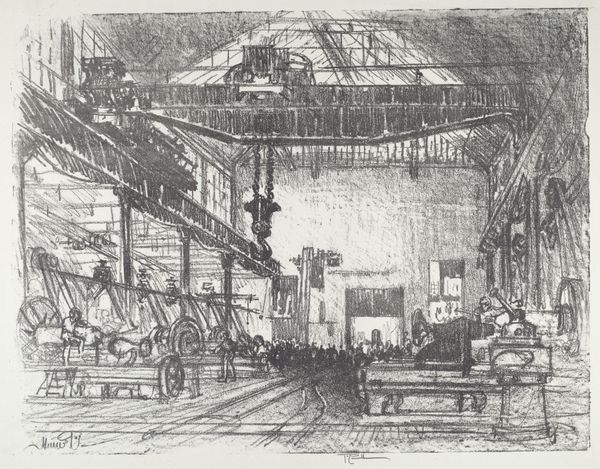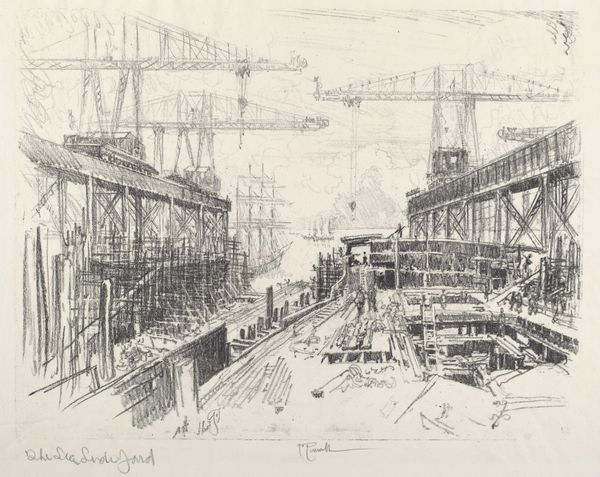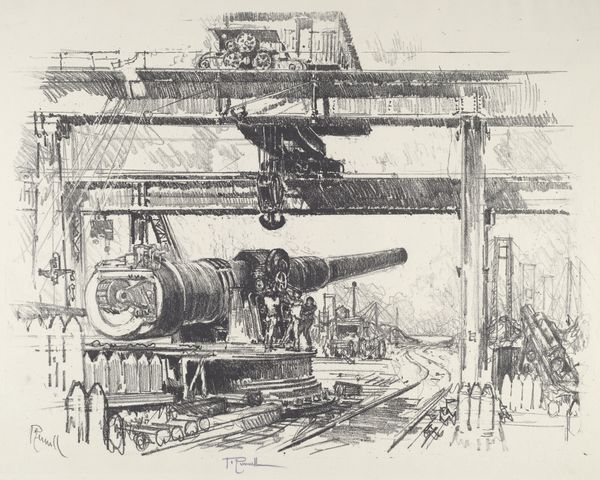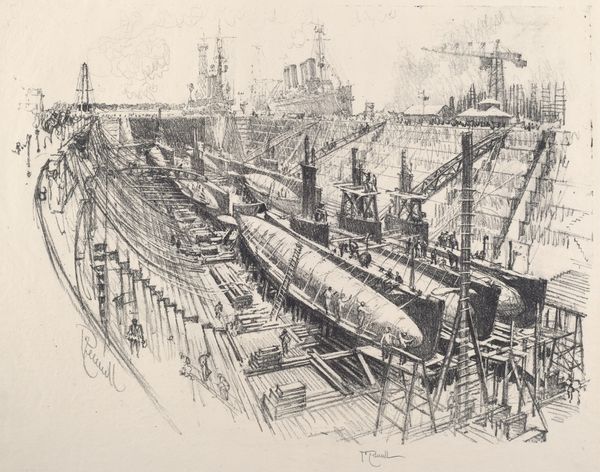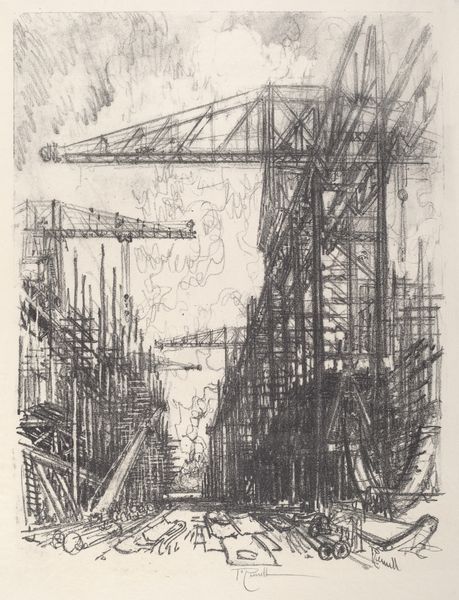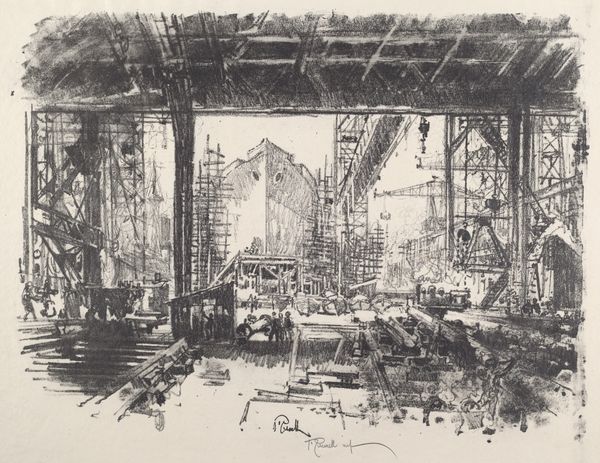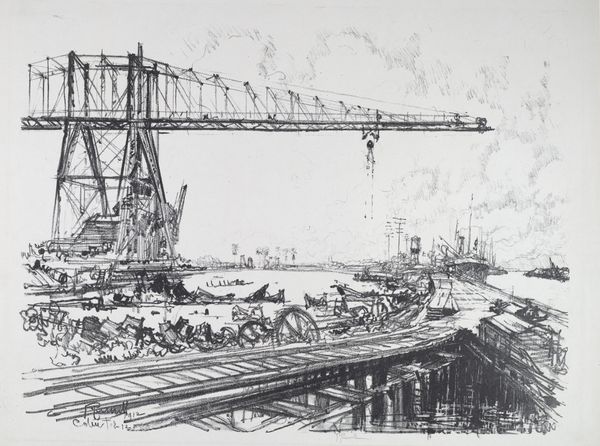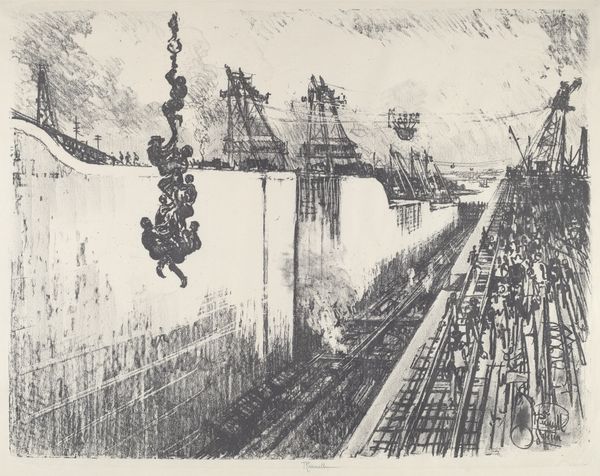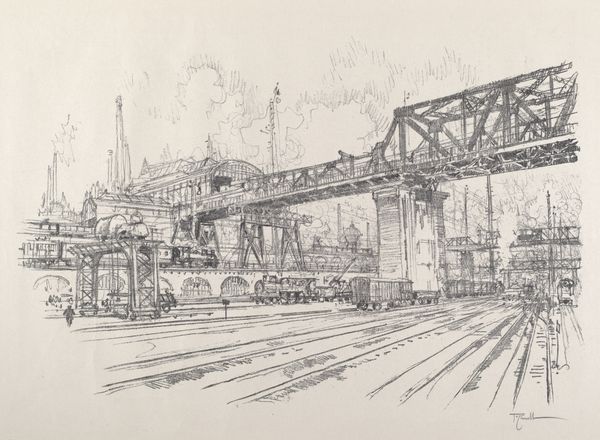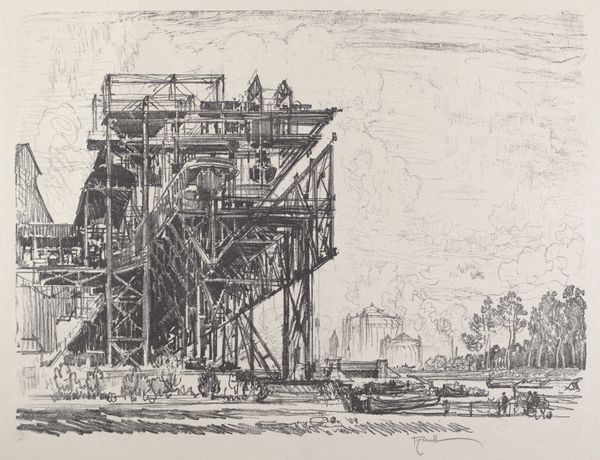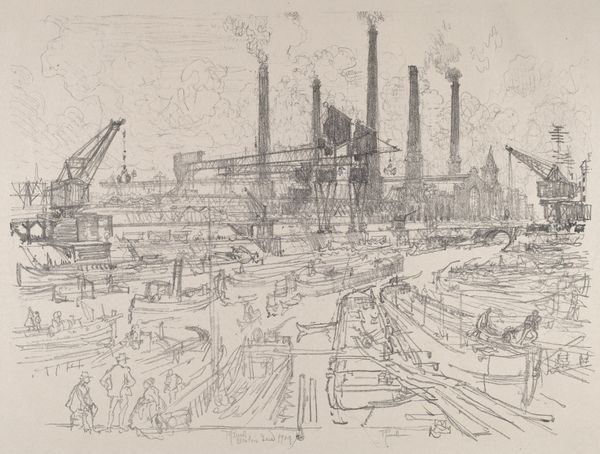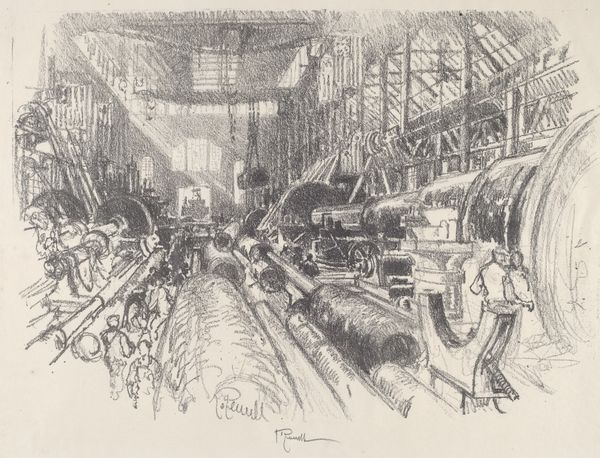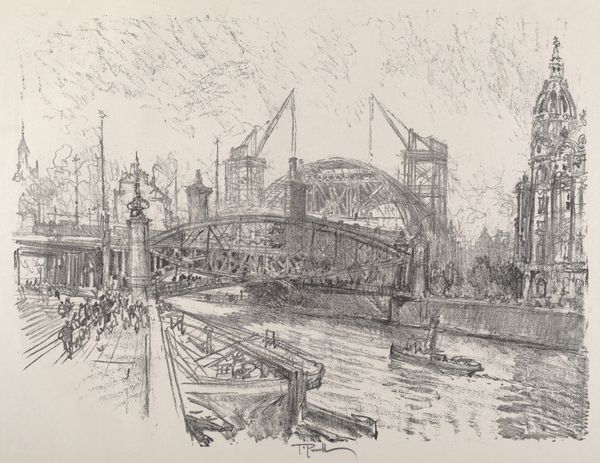
print, graphite
# print
#
graphite
#
cityscape
#
realism
Copyright: National Gallery of Art: CC0 1.0
Curator: Immediately, there’s a powerful, industrial dread about this work. The immense factory setting sketched in graphite, the almost skeletal figures of laborers…it feels bleakly mechanical. Editor: Well, that feeling is not accidental. We're looking at Joseph Pennell’s 1916 print, "Steel Bars for Shells." It’s a product of the First World War, meant to portray American industrial might focused on wartime production. Curator: Ah, the imagery makes so much sense in that context. Look at the piles of metal rods dominating the foreground - it’s all directed to the machinery in the background. The entire factory almost seems to become a monstrous god requiring constant feeding. It's subtly dehumanizing. Editor: It certainly is a reflection of the time. Pennell was a progressive artist with very defined socio-political views. Images of industry took on special significance as a matter of national identity and pride, as well as representing an engine of death during that period. There were complex feelings. Curator: What’s so unsettling is how that machinery, that almost architectural interior of steel and cranes, overwhelms any human element. We see so many beams and rods and supports everywhere, but those small groups of laborers could almost disappear against all the metal. They are mere specks! It's incredibly striking. Editor: And Pennell achieves this with remarkable technical skill, too. Notice how he varies the graphite density, drawing our eye in layers. This was part of an effort to create art relevant to, and serving, the goals of government policy. He would later support a return to peacetime industry as an effort to secure economic recovery after the trauma of WW1. Curator: I wonder what Pennell intended to be the main symbolic thrust here – that man controls machine, or machine controls man? He shows us industrial activity, not triumph, with that cold realism of his technique. Editor: Perhaps it was to stir up the notion of control so closely linked with war propaganda, yet show how hollow that notion of total mastery really is. Food for thought indeed. Curator: Thank you for helping shed light on what initially felt like such a dark, inscrutable piece. Editor: My pleasure, anytime. Understanding the history provides much clarity to an already impressive scene!
Comments
No comments
Be the first to comment and join the conversation on the ultimate creative platform.
